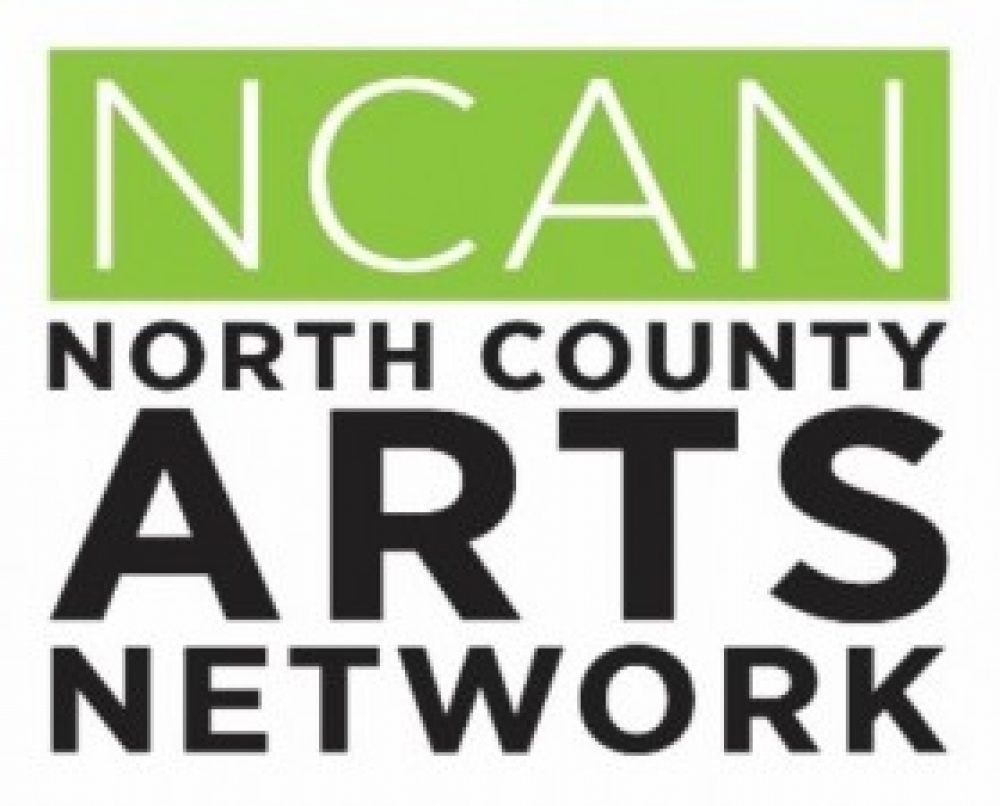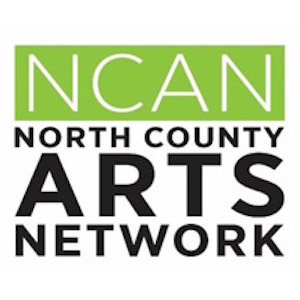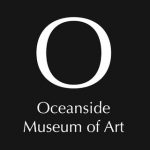 Introduction
Introduction
by Daniel Foster, Oceanside Museum of Art
- The arts in North County San Diego is largely local provincial growth without regional and collaborative funding and growth
- As the arts communities are evolving, there is a need for regional synergies, collaboration and a leveraged approach to resources
- There was a panel on 4/1 that brought 6 leaders in North County arts communities together and what came out of that panel was recognition of a need to come together on a regular basis, to evolve the arts throughout North County San Diego
- Philanthropy and non profits are moving away from the competition mindset and toward Collective Impact
- What is Art
Audience members briefly introduced themselves
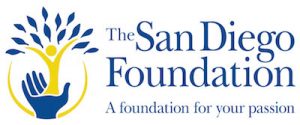 Presentation on San Diego Arts & Culture
Presentation on San Diego Arts & Culture
by Felicia Shaw, San Diego Foundation
- Need to be an advocate for arts, learn how to frame it
- Giving is increasing
- Charity Navigator has shown that 2012 donations increased, particularity to art, environment and animal charities
- In San Diego: Give Big Campaign; saving the San Diego Opera and Ken Cinema from closing
- Public funding movement:
- City of San Diego
- Cultural tourism – San Diego was awarded the 2013 Business Destinations Travel Award for Best Destination for Cultural Tourism in North America
- Creative placemaking
- Arts education: Arts Empower San Diego Initiative
- Organizing
- Need for art organizations to break out of silos and start collaborating
- San Diego examples: San Diego Dance Connect, San Diego Performing Arts League, Rising Arts Leaders
- The art community is rebounding
- Cultural art is changing
- Culture Track reports on changing attitudes of
consumers - One effect of the economic downturn is that people have cut down on leisure activities
- Society at large is overstimulated, hyper-focused and overcommitted
- People are perpetually seeking the “new”
- Tendency toward sampling lots of different options, versus returning to a single place over and over
- People in their 40s attend cultural institutions and events least often
- Culture is being defined more broadly, including street art, food, etc
- The audience is broad and diverse
- In general, institutions are seeing lower attendance
- Deep and authentic engagement is necessary
- Culture Track reports on changing attitudes of
- How to engage better:
- go to people where they are
- listen to what people define as art
- understand how people want to be engaged
- educate arts community about issues people care about
- encourage organizations to become more relevant
 Presentation on National Arts Issues and Policy
Presentation on National Arts Issues and Policy
by Nina Ozlu Tunceli, Americans for the Arts
- There needs to be more public value, appreciation and involvement in the arts
- The Arts Action Fund is free to join, and similar to Sierra Club, for the
arts.- There is a need to build more political influence to ensure bipartisan support for art
- Need an army of advocates – goal is 1 million
- Goal for PAC money is to raise $250,000 every 2 years to support pro-arts candidates
- Discussed differences between 501(c)3 organizations versus 501(c)4 organizations
- Americans for the Arts is 501(c)3
- Action Fund is 501(c)4
- for 501(c)3 organizations, there are specific rules defining what is lobbying, that would need to be tracked; if not lobbying, considered advocacy
- 501(c)3 cannot support a particular candidate
- 501(c)3 can create candidate scorecards, questionnaires, etc but can’t release if only focused on arts
- 501(c)4 can release findings of 501(c)3 organizations
- Discussed importance of knowing the difference between what is considered advocacy versus lobbying
- PR, Marketing, workshops, public opinion polling under umbrella of advocacy
- Ballot initiatives are direct lobbying
- more than 85% of arts-related ballot initiatives have passed, most that did not had some type of rider that concerned a sports team/venue
- arts education ballot initiatives almost always pass
- Policy Wheel – steps a group/issue needs to go through to make a policy change
- identify problems and obstacles that people care about
- identify solutions and opportunities
- gather external data – research and polling
- craft message, identify targets, build coalition
- recruit and train grassroots and grasstops (grassroots members connected with decision makers)
- promote visibility and media, sharing what is at stake
- lobby decision makers
- collect policy action outcomes and voting results
- Celebrate and evaluate whether successful
- Get general public to support an issue at a high level and politicians will follow
- Support pro-arts candidates, educate new politicians to become pro-arts
- Impacts to elected officials
- grassroots
- grasstops
- coalitions
- peer-to-peer
- Strength of collective action lies in tying together organizations that are representational of the breadth of the public
- diversity of arts disciplines
- cultural and ethnic diversity
- organizational size diversity
- geographic diversity – rural, suburban, urban
- Politicians often see all in different art disciplines as a single “arts” constituent
- Need to humanize the issue with a story, find out what the elected official cares about and focus on a message that ties art to what they care about
- 10 Reasons to Support the Arts
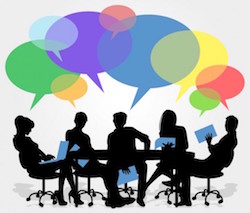 Question and Answer Session
Question and Answer Session
- “Pro-Arts” cities spend an average of $5 per capita per year
- Source of funding – neighborhood improvement funds, reinvestment funds
- but these are normally limited to hard products – building and renovating
- not “soft” programming
- Source of funding – NEA does “soft” programming
- NEA is looking for applications from our area
- Deadline of 7/24/14
- NEA used to travel around the country encouraging applications, but stopped due to budgetary constraints, resulting in less applications
- Idea for future workshop or webinar – Meeting about federal funds that are available
- Important for North County arts groups together to come up with a laundry list of issues that the
community cares about and share that with elected officials- arts education
- cultural tourism
- Source of funding – California Arts Council – but only goes to local arts council and there isn’t one in North County
- Source of funding – San Diego County Supervisors – each one has $500,000 to allocate to projects they care about
- How to position a candidate to be an arts advocate
- community must know what it wants
- San Diego Regional Arts and Culture Coalition (http://www.sdracc.org/) does a forum
- How to get the North County arts, as a unified voice, off the ground
- answer the question “What are the changes you want to see happen?”
- find a common denominator, an issue seeking to charge forward
- create bond
- activism
- build a list of important contacts and share it within the group
keep up consistent good communication within the group - The 5 Key Steps in a Grassroots Advocacy Cycle (http://bolderadvocacy.org/blog/the-5-key-stepsin-
a-grassroots-advocacy-cycle) - share credit for successes
- need leadership roles to keep issues at a manageable level
- pick first issue and attack it, to start momentum
- initially must be volunteer-driven until it is clear exactly what the group wants, what it will become
- to get funding, there must be specifics
- Audience asked if they believe North County is ready to start meeting to develop a stronger unified voice
- overwhelming yes
- frequency of meeting – every other month initially, then maybe quarterly when established
- initially get everyone together, all-inclusive ; possible future evolution would be to have subcommittees based on art discipline
- steering effort needed by 6-8 individuals – there were volunteers and Daniel collected their cards
- meeting location should rotate among facilities of members
- Dealing with officials that are not arts oriented
- use different messengers with unified message
- go to what is important to them and find people in that area to lobby – e.g. story of using a police chief to talk about how arts program got juveniles off the streets, reducing crime rates, to get support from official whose primary focus was public safety
- bond with them over things that matter to both – e.g. impact arts have on military
- Money for North County arts group
- initially do low/no cost
- after get momentum, some successes, then can ask for money
- have funders and art organizations meet together
